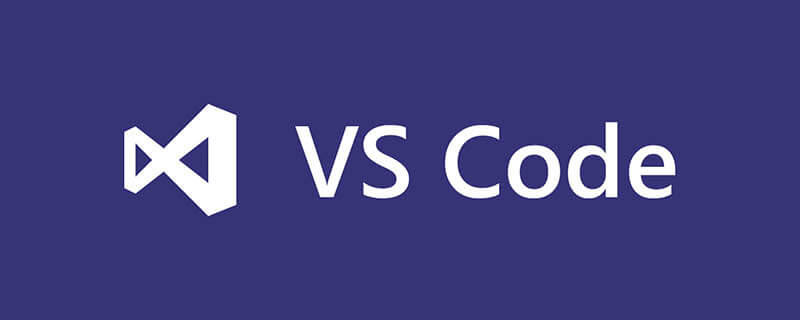Question: How to store NULL in memory in C? Answer: NULL is usually defined as an integer 0, indicating a null pointer. But NULL is not stored as a 0 byte, but is interpreted as a null pointer as a 0 value. This convention handles NULL pointers by the compiler and runtime environment.

NULL memory storage in C language: There is only one truth!
Many beginners, even some veterans, are confused about how NULL in C are stored in memory. This is not something that can be explained clearly by simply "pointer pointing to 0". The facts are more complicated and more interesting than you think. After reading this article, you can not only understand the storage method of NULL , but also have a deeper understanding of the underlying mechanisms of pointer and memory management, avoiding some common pitfalls.
Background and purpose:
This article aims to dig into NULL 's memory representation in C and reveal the mechanism behind it. After reading, you will be able to distinguish the specific implementation of NULL under different compilers and platforms, and better understand the nature of pointers.
Basics:
We need to clarify several concepts first: pointer, memory address, and 0 value. A pointer is a variable, which stores a memory address; the memory address is a unique identifier of the memory unit; a value of 0 is a numerical value. Only by understanding these three can we begin to explore NULL in depth.
Core concept: Definition and function of NULL
NULL macro, usually defined as a null pointer constant. Its purpose is to indicate that a pointer does not point to any valid memory address. This is very important in many scenarios, such as checking whether the function return value is successfully allocated memory, or determining whether the linked list reaches the end. But the key is, how is NULL implemented? It depends on the compiler and platform.
How NULL works:
Most compilers define NULL as integer 0. This does not mean that NULL stores a byte with a value of 0 in memory. Rather, the value of NULL is an integer 0, which will be interpreted as a null pointer. This is a convention that the compiler and runtime environment will handle NULL pointers according to this convention. It should be noted that this is only the most common way to implement it, and not all compilers follow this convention. Some compilers may define NULL as a special address, such as 0x00000000.
Code example:
Let's look at a simple example:
<code class="c">#include <stdio.h> #include <stdlib.h> int main() { int *ptr = NULL; printf("The value of ptr is: %p\n", ptr); //输出ptr的值,通常是0x0 if (ptr == NULL) { printf("ptr is NULL\n"); } return 0; }</stdlib.h></stdio.h></code>
In this code, ptr is initialized to NULL . printf function formats the output pointer's value using %p , and you will usually see 0x0 or similar output, but it depends on your system and compiler. The if statement demonstrates how to check whether a pointer is NULL .
Advanced Usage and Traps:
A common pitfall with NULL pointers is that attempting to access the memory pointed to by NULL pointers will cause the program to crash (segment fault). So, be sure to check if it is NULL before using the pointer. Also, do not dereference operations on NULL pointers, such as *ptr (if ptr is NULL).
Performance optimization and best practices:
Checking the NULL pointer should be done as early as possible, which can avoid many potential errors. Developing good programming habits, checking the validity of pointer parameters at the function entrance, and carefully processing pointers inside the function can greatly improve the robustness and maintainability of the code. Remember, prevention is better than treatment!
Deeper thinking:
The implementation of NULL is closely related to the compiler and operating system. Different compilers may adopt different strategies to represent NULL , which makes it necessary to be extra careful when porting across platforms. Understanding the underlying mechanism of NULL can help you write more reliable and robust C code. Remember, understanding pointers is the key to mastering C language.
The above is the detailed content of How to store NULL in memory in C language. For more information, please follow other related articles on the PHP Chinese website!
 (超详细)VScode中配置C语言环境的方法Dec 05, 2022 pm 07:05 PM
(超详细)VScode中配置C语言环境的方法Dec 05, 2022 pm 07:05 PMVScode中怎么配置C语言环境?下面本篇文章给大家介绍一下VScode配置C语言环境的方法(超详细),希望对大家有所帮助!
 c语言中node是什么意思Jul 06, 2022 pm 03:51 PM
c语言中node是什么意思Jul 06, 2022 pm 03:51 PM在C语言中,node是用于定义链表结点的名称,通常在数据结构中用作结点的类型名,语法为“struct Node{...};”;结构和类在定义出名称以后,直接用该名称就可以定义对象,C语言中还存在“Node * a”和“Node* &a”。
 c语言怎么将数字转换成字符串Jan 04, 2023 pm 03:20 PM
c语言怎么将数字转换成字符串Jan 04, 2023 pm 03:20 PMc语言将数字转换成字符串的方法:1、ascii码操作,在原数字的基础上加“0x30”,语法“数字+0x30”,会存储数字对应的字符ascii码;2、使用itoa(),可以把整型数转换成字符串,语法“itoa(number1,string,数字);”;3、使用sprintf(),可以能够根据指定的需求,格式化内容,存储至指针指向的字符串。
 c语言开根号运算符是什么Mar 06, 2023 pm 02:39 PM
c语言开根号运算符是什么Mar 06, 2023 pm 02:39 PM在c语言中,没有开根号运算符,开根号使用的是内置函数“sqrt()”,使用语法“sqrt(数值x)”;例如“sqrt(4)”,就是对4进行平方根运算,结果为2。sqrt()是c语言内置的开根号运算函数,其运算结果是函数变量的算术平方根;该函数既不能运算负数值,也不能输出虚数结果。
 c语言数组如何初始化Jan 04, 2023 pm 03:36 PM
c语言数组如何初始化Jan 04, 2023 pm 03:36 PMC语言数组初始化的三种方式:1、在定义时直接赋值,语法“数据类型 arrayName[index] = {值};”;2、利用for循环初始化,语法“for (int i=0;i<3;i++) {arr[i] = i;}”;3、使用memset()函数初始化,语法“memset(arr, 0, sizeof(int) * 3)”。
 c语言合法标识符的要求是什么Aug 27, 2020 pm 01:47 PM
c语言合法标识符的要求是什么Aug 27, 2020 pm 01:47 PMc语言合法标识符的要求是:1、标识符只能由字母(A~Z, a~z)、数字(0~9)和下划线(_)组成;2、第一个字符必须是字母或下划线,不能是数字;3、标识符中的大小写字母是有区别的,代表不同含义;4、标识符不能是关键字。
 c语言中源文件编译后生成什么文件Nov 23, 2022 pm 07:44 PM
c语言中源文件编译后生成什么文件Nov 23, 2022 pm 07:44 PMc语言编译后生成“.OBJ”的二进制文件(目标文件)。在C语言中,源程序(.c文件)经过编译程序编译之后,会生成一个后缀为“.OBJ”的二进制文件(称为目标文件);最后还要由称为“连接程序”(Link)的软件,把此“.OBJ”文件与c语言提供的各种库函数连接在一起,生成一个后缀“.EXE”的可执行文件。
 c语言可以处理的文件类型是什么Sep 19, 2022 pm 03:53 PM
c语言可以处理的文件类型是什么Sep 19, 2022 pm 03:53 PMc语言可以处理的文件类型是:文本文件和二进制文件。C语言所能够处理文件是按照存放形式分为文本文件和二进制文件:1、文本文件存储的是一个ASCII码,文件的内容可以直接进行输入输出;2、二进制文件直接将字符存储,不能将二进制文件的内容直接输出到屏幕上。


Hot AI Tools

Undresser.AI Undress
AI-powered app for creating realistic nude photos

AI Clothes Remover
Online AI tool for removing clothes from photos.

Undress AI Tool
Undress images for free

Clothoff.io
AI clothes remover

AI Hentai Generator
Generate AI Hentai for free.

Hot Article

Hot Tools

SublimeText3 Mac version
God-level code editing software (SublimeText3)

PhpStorm Mac version
The latest (2018.2.1) professional PHP integrated development tool

WebStorm Mac version
Useful JavaScript development tools

ZendStudio 13.5.1 Mac
Powerful PHP integrated development environment

MinGW - Minimalist GNU for Windows
This project is in the process of being migrated to osdn.net/projects/mingw, you can continue to follow us there. MinGW: A native Windows port of the GNU Compiler Collection (GCC), freely distributable import libraries and header files for building native Windows applications; includes extensions to the MSVC runtime to support C99 functionality. All MinGW software can run on 64-bit Windows platforms.






